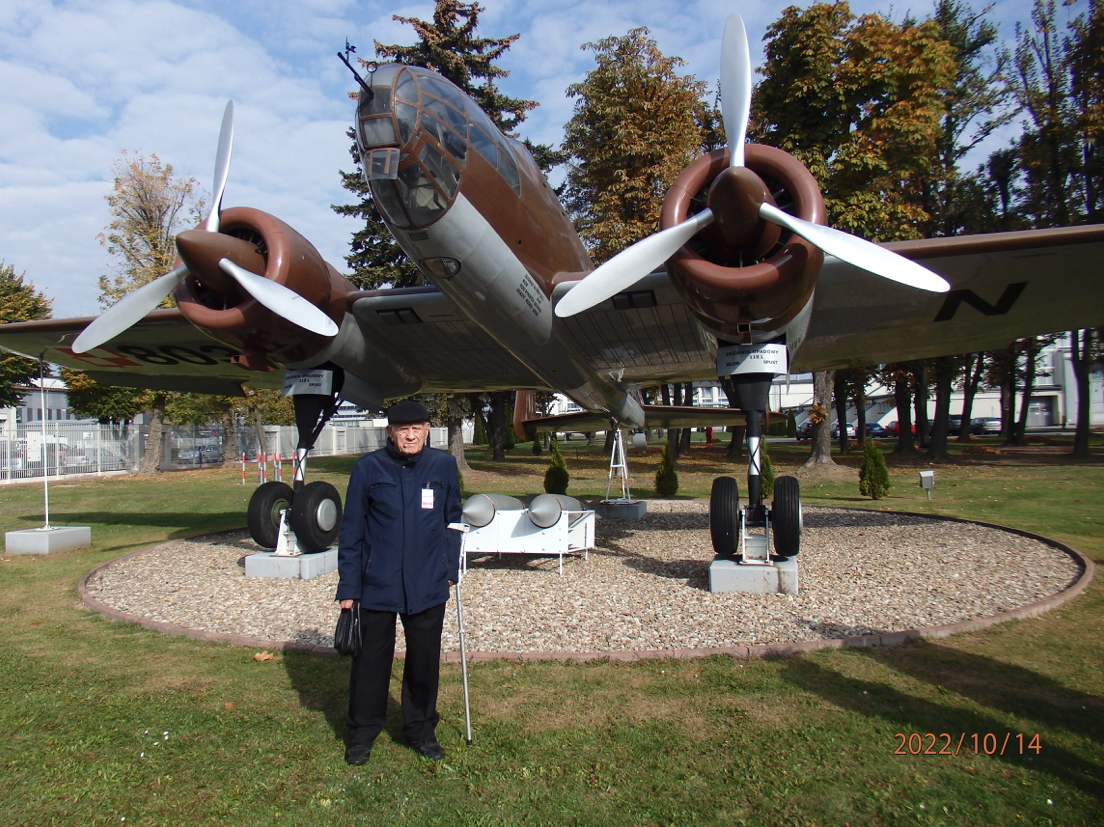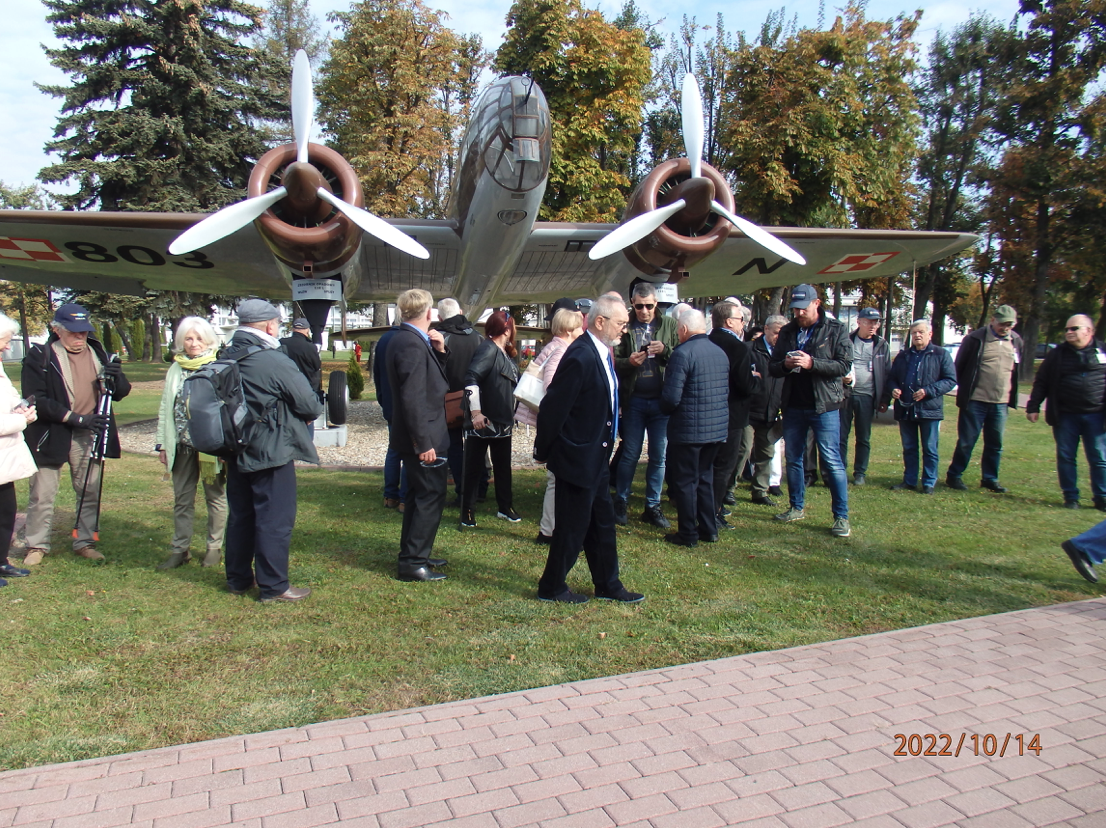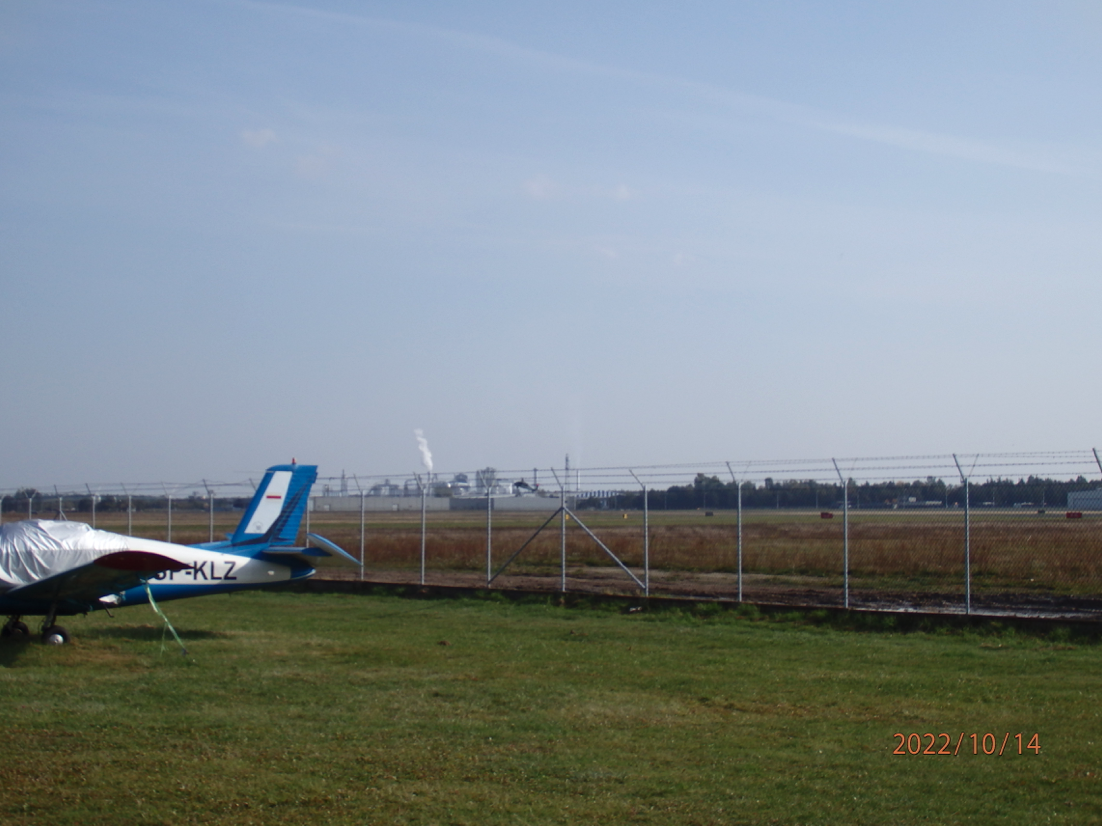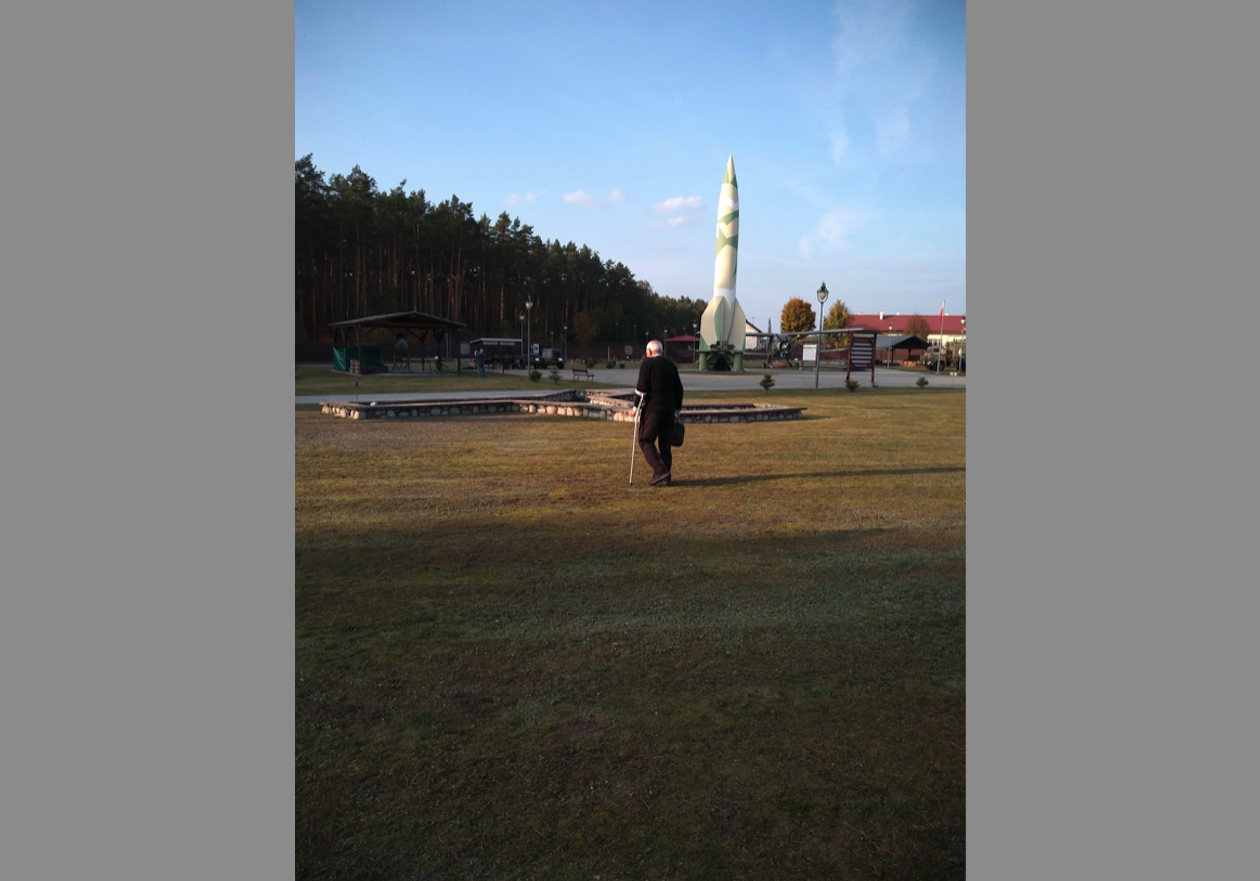Wrocław 2022-11-05
Teofil Lenartowicz
Meeting of the Experimental Pilots Club in Kamionka.
Fragments.
In the first words, I would like to explain to readers who are not involved in aviation, what pilots from the crowd of KPD and where I am in this wonderful top-class group. Well, KPD members can be pilots who fly over prototype and serial airplanes, as well as engineers who make these tests. I am not a pilot or an engineer, but only a sympathizer of the Club. In fact, as an aircraft mechanic, and then a senior master, I managed in WSK PZL Mielec the mechanics performing ERNO tests (electro, radio, navigation, accessories), so that’s why everything that KPD deals with is so close to me. I have been working with WSK PZL Mielec since 1955 at the Department 57 Start and in complaints about retirement. I can confidently say that my participation in serial tests before and after flights was on almost all Lim 5 (MiG-17 license), Lim 5P (Mig 17PF license), Bies, TS-11 Iskra, AN-2, M-15 aircraft Belphegor and the M-18 Dromader. This also applied to travel complaints, and most of it concerned the radar devices of Lim 5P airplanes.
The date of the reunion was set for October 13-15, 2022 in Kamionka, Ostrów commune in Podkarpacie, in the Cyziówka Training and Leisure Center, so far from Wrocław, where I live with my wife. We left the day before to rest after the trip. So we were the first to check in there.
On October 14, 2022, right after breakfast, we took a bus and drove through the Sandomierz Forest to Polskie Zakłady Lotnicze Mielec (PZL Mielec). Coming back to the story about visiting PZL Mielec, a member of the KPD, Czesław Żywocki, played an important role here. As an experimental pilot of this Department, he acted as a tour guide. First, we visited hall 3, where Black Hawk helicopters and AN-28 Bryza planes were assembled. I admired the places in the hall where I started working in 1955.
Then we went to the airport, where we visited the planes standing in hangars and on stands. We were greeted by the director of flight tests, Mr. Artur Wojtas. Alternately with the pilot Czesław Żywocki, they answered questions and explained the issues.
I would like to mention that I have spent the longest part of my life here at work. Now, for the first time, I saw the new large hangar standing between hangars 1 and 2. The old places have not changed, but have taken on a fresh look. Black Hawk helicopters and Bryza planes were visible in the air in the tests. It is worth adding that the current owner of PZL Mielec is the American concern Lockheed Martin. He bought shares a few years ago from his also American predecessor, Sikorsky. It is also worth mentioning that PZL Mielec is in the family of aviation plants, the only plant where both helicopters and airplanes are manufactured.
There was a ban on taking photos, so I don’t have photos from Hall 3, where the editing took place. This also applies to the airport where the trials took place. What I saw did not resemble the times from more than half a century ago when I worked there. We used to produce about 40 planes a month, the stands in the grass and in front of the hangars were filled with planes, and the roar of working engines was so loud that it was difficult to communicate.
I wrote that we were driving through the Sandomierz Forest, but in fact, these are only the remains of that Forest. However, the fact that the trees were not planted there by man’s hand testified to the nature that created this beautiful work. The whole ride to Mielec was a beautiful experience of meeting nature. Only where and where the cars and mushroom pickers standing on the side of the road testified that a man rules here.
It is worth adding that these areas were of great strategic importance. Here, before the Second World War, from Dębica to Pustków, the chemical industry was located, further north, PZL Mielec was established, and even further to the north, Huta Stalowa Wola with the production of tanks. All this was in the center of Poland, far from our enemies, the Soviet Union and Nazi Germany. It is known that the eastern border of Poland was then located far to the east. The remote location of the defense industry from enemies prevented its destruction.
During World War II, the Germans built a concentration camp in Pustków, V-1 and V-2 missile tests were carried out in Bliznie, there were SS and Wehrmacht training grounds, an airport in Mielec and aircraft repairs. The Home Army partisan operations took place here and the years of my young life were connected with these areas.
After the visit, we went to the Aero Club of Działowski Brothers, where we were treated to tasty sour rye soup and dumplings. The president of the Aero Club, Piotr Świerczyński, showed hospitality, and he doubled over and tried, because it replaced a dinner for which we would not have time, because we were to visit the Historical Park in Bliźno.
Sometime after 2 p.m. we gathered up and headed towards Scar. However, we did not go through the forests of the remains of the forest, but along the road towards Dębica and stopped at the gas station at the Pikułówka roundabout. It was the place where I spent my young years at the age of 10 in 1938. Then the German occupation and the following years. I took the opportunity and took the microphone from the driver, pointing with his hand at the town of Przecław, visible in the distance. I told how from there, when I was 14, I was forced by the Germans to walk in winter in wooden clogs to Wola Ocieka, to break a granite stone on the road to Scar. When the bus started, I showed the route of 9 km, which I traveled with others every day for a total of 18 km and after breaking 1 m3 of granite rocks finely.
I showed with my hand the Tuszyma Forest District, where the late Jurasz, a forest inspectorate, created a museum of the excavated remains of V-1 and V-2 rockets. On the way to Blizna, I told you what happened in those hard times, when the areas east of the Dębica Mielec railway line were mostly displaced, and random people were shot without warning. Huge fortifications were built there in the woods by the forces of concentration camp prisoners, Soviet prisoners of war, and local professionals who were forced to work there, and one of them was my brother-in-law and I, who were building the road to Scary. There were a dozen or so rings for fortifications, and rocket launchers were in the center of the SS training ground. There was also a Wehrmacht training ground.During the displacement of the Germans, the Red Army was advancing to capture the Scar area as soon as possible. On the other hand, the Home Army intelligence obtained German secrets of V-1 and V-2 weapons through field troops and transferred them to Great Britain.This is how we got to the Blizna Historical Park, where we were welcomed by Mrs. Renata Rusin, who is the PHB guide. I know her because she is the daughter-in-law of Aleksander Rusin pseud. Olek. This famous commander of the AK partisan detachment recaptured the scar from other Germans, preventing the German sappers from blowing up the secrets. They kept the scar until the Soviets came, and then Rusin pseud. Olek passed on valuable information to the international Soviet-American-British-French commission. For this act he received a letter of thanks from the Prime Minister of Great Britain, Winston Churchill. There was a ready application for the appointment of Colonel Aleksander Rutin with the rank of general, but his premature death made the nomination impossible. He was a Cursed Soldier by both totalitarian systems. he fought both against fascist Germany and the Soviets until 1956 for 16 years. Then the system hated and humiliated by the People’s Republic of Poland. He died humiliated even after the political transformation.
Renata, the guide, showed us around PHB, told its history and showed us the exhibits. However, I would like to add that the remains of the rocket launchers are located outside the PHB site, in other places of forests, several hundred meters away from this site. I know these places because I visited them with Colonel Rusin many years after the war and listened to his stories.
Many of my historical memories are associated with Blizna and the guerrilla movement. These are mostly tragic and sad events partially described in my book, I lived as I could.
We finished the tour thanking the driver for the effort of driving along narrow forest roads. We had 2 hours to prepare for the gala dinner at the end of the KPD Congress.
As long as I remember, all KPD meetings ended with a gala dinner with more important decisions about future actions. There was no smorgasbord on that day, but waitresses served. Both President Zygmunt Mazan and Andrzej Pussak, who is responsible for finances, presented the guidelines by asking about the proposal of where the KPD congress is to be held next year. There were various locations, and I named Wrocław.
There were statements, distinguished ones were awarded, and I was accepted as a member of the KPD supporters. I would like to emphasize that Artur Wojtas, the director of PZL Mielec, honored us with his presence.
During the dinner, there were many conversations that lasted until the late evening hours, and the most interesting one was that of General Jerzy Dębski, who in his warm, heartfelt words referred to the positive actions of the KPD.
My wife and I went to sleep with charged batteries for further activities. Communing with people, although strangers, but close in aviation sacrifice, gives great satisfaction and the meaning of further life.
In the morning, after breakfast on the third day of the Congress, a mass was held in a nearby church. We said goodbye to our friends and left around 11:00.
Teofil Lenartowicz. Wrocław, on November 5, 2022.




